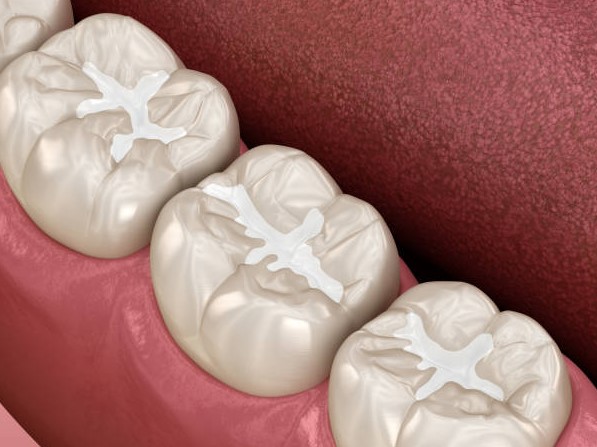Different types of dental fillings have various advantages and disadvantages. Here are the pros and cons of the most common types:
Amalgam Fillings (Silver Fillings)
Pros:
- Durability: Extremely durable, lasting 10-15 years or more.
- Strength: Can withstand significant chewing forces.
- Cost: Generally less expensive than other types of fillings.
- Ease of Placement: Quick and easy to place, requiring less time in the dentist’s chair.
Cons:
- Aesthetics: Noticeable due to their metallic colour, which can be a drawback, especially for front teeth.
- Potential for Allergies: Contains mercury, which some people may be allergic to.
- Thermal Conductivity: Can conduct heat and cold, leading to increased sensitivity in some cases.
- Removal of Healthy Tooth Structure: Often requires more removal of the healthy tooth structure to create enough space for the filling.
Composite Fillings (Tooth-Coloured Fillings)
Pros:
- Aesthetics: Can be closely matched to the colour of existing teeth, making them ideal for visible areas.
- Bonding: Bonds directly to the tooth structure, which can help support the remaining tooth.
- Versatility: Can be used for various dental restorations beyond fillings.
Cons:
- Durability: Less durable than amalgam, typically lasting 5-7 years.
- Cost: More expensive than amalgam fillings.
- Time and Technique Sensitivity: Requires more time to place and is more technique-sensitive.
- Staining: Can stain over time, especially with exposure to substances like coffee, tea, or tobacco.
Gold Fillings (Gold Inlays and On lays)
Pros:
- Durability: Extremely durable, lasting 20 years or more.
- Strength: Strong and can withstand heavy chewing forces.
- Bio-compatibility: Well-tolerated by gum tissues and less likely to cause allergic reactions.
Cons:
- Cost: More expensive than other types of fillings.
- Aesthetics: Not tooth-coloured, making them more noticeable.
- Multiple Visits: Typically requires at least two dental visits to place.
Ceramic Fillings (Porcelain)
Pros:
- Aesthetics: Highly aesthetic and can be matched to the colour of the natural tooth.
- Stain Resistance: More resistant to staining compared to composite fillings.
- Durability: Can be quite durable, often lasting longer than composite fillings.
Cons:
- Cost: More expensive than composite and amalgam fillings.
- Brittleness: More prone to cracking and chipping than other materials.
- Multiple Visits: Often requires multiple visits to the dentist to place.
Glass Ionomer Fillings
Pros:
- Release Fluoride: Can help protect the tooth from further decay.
- Bonding: Bonds well to the tooth structure.
- Ease of Placement: Easy to place and quick to set.
Cons:
- Durability: Less durable and more prone to wear and fracture, typically used in areas with less chewing pressure.
- Aesthetics: Less aesthetic compared to composite fillings.
- Cost: Can be more expensive than amalgam fillings.
The choice of filling type depends on various factors, including the location and extent of the decay, the patient’s aesthetic preferences, budget, and the dentist’s recommendation.




